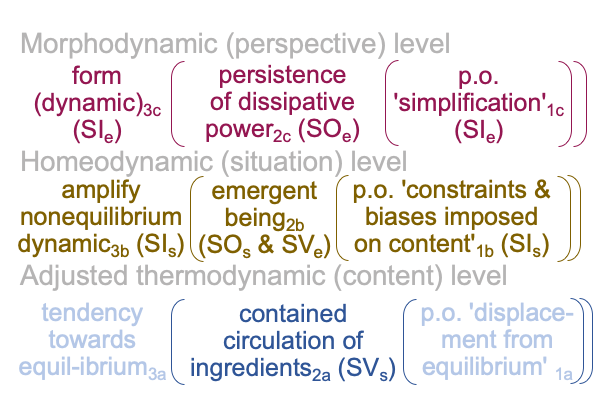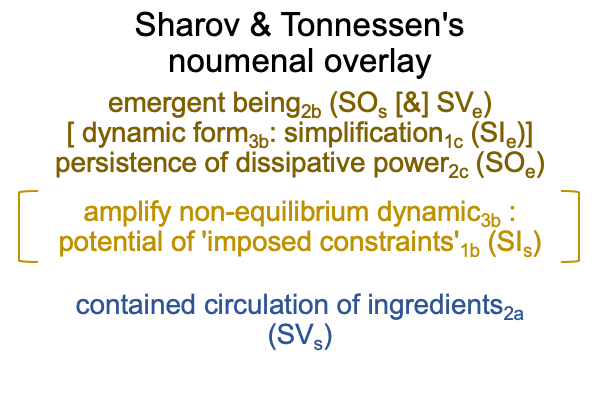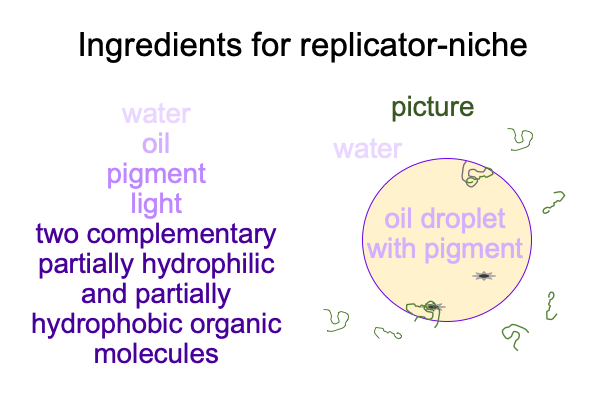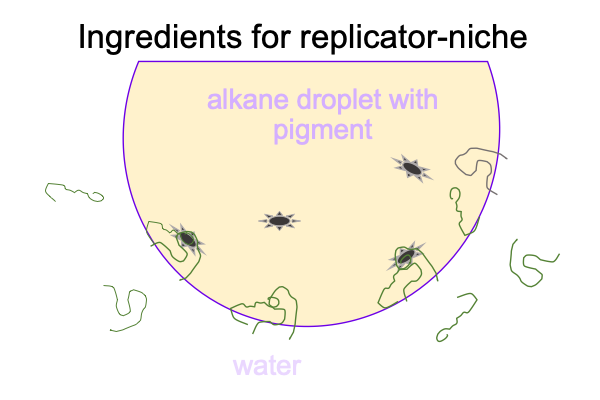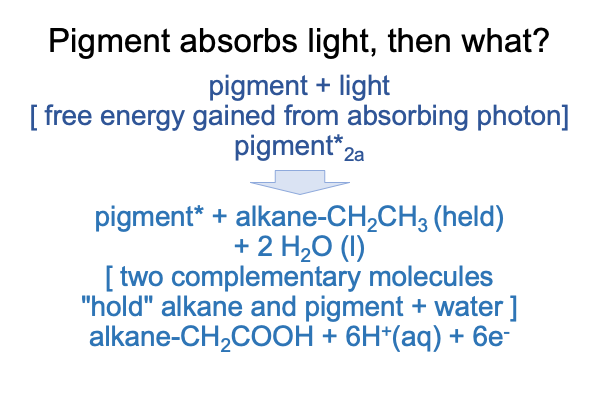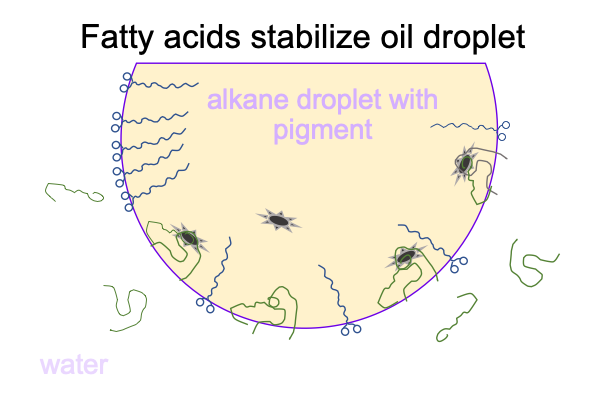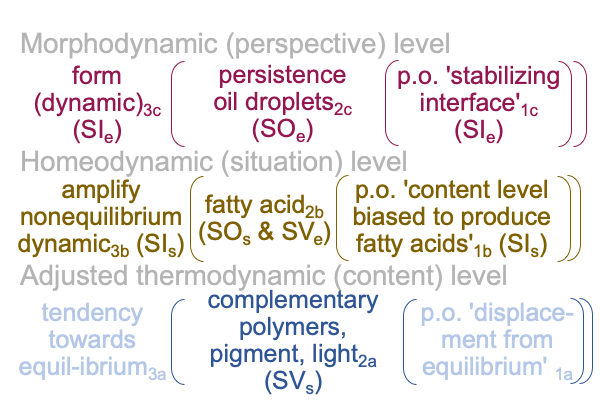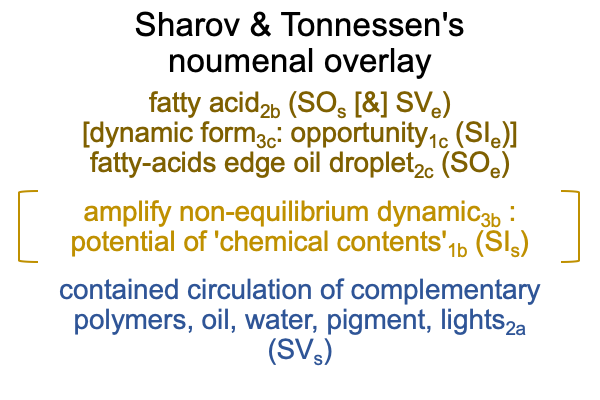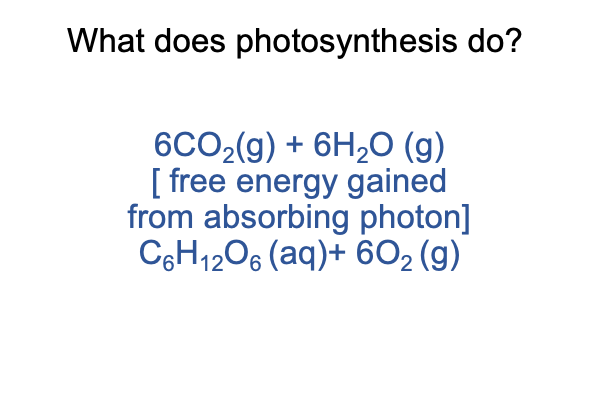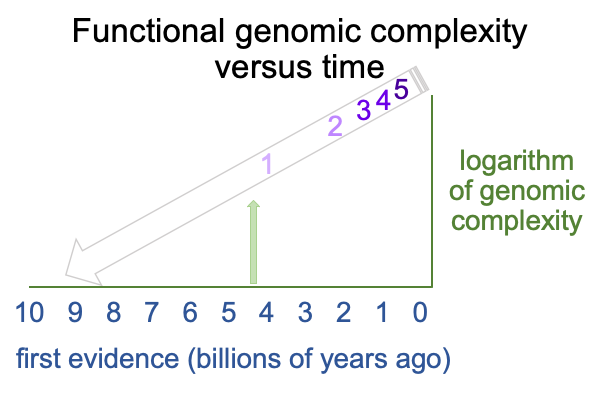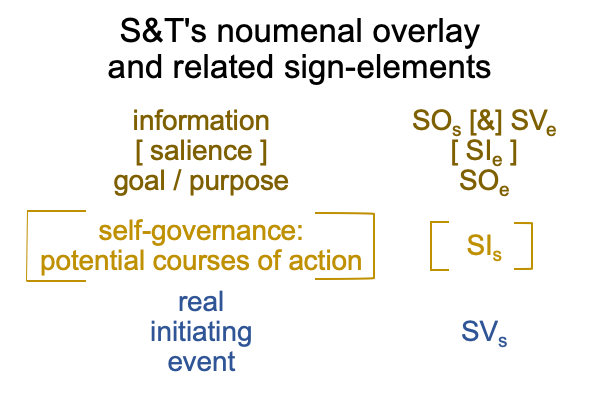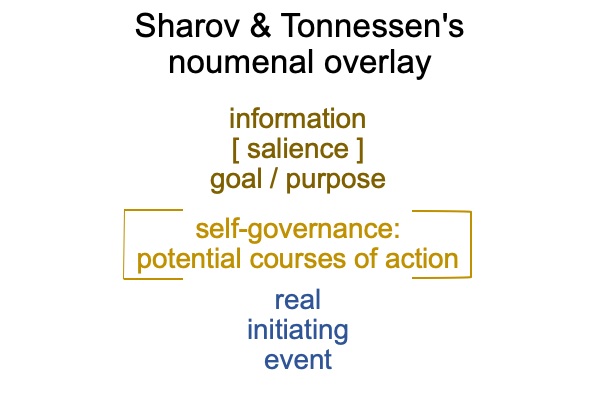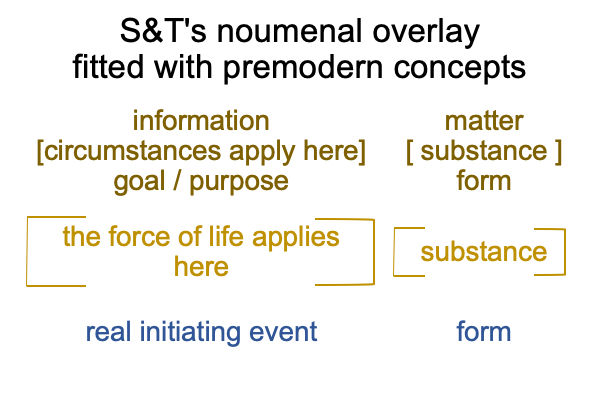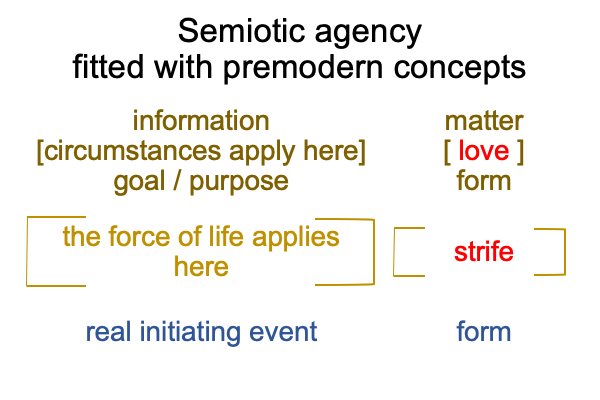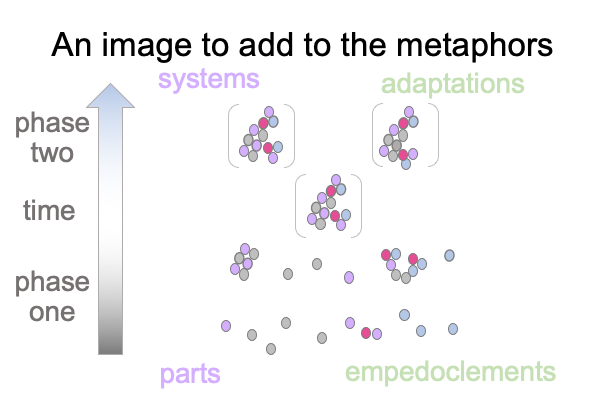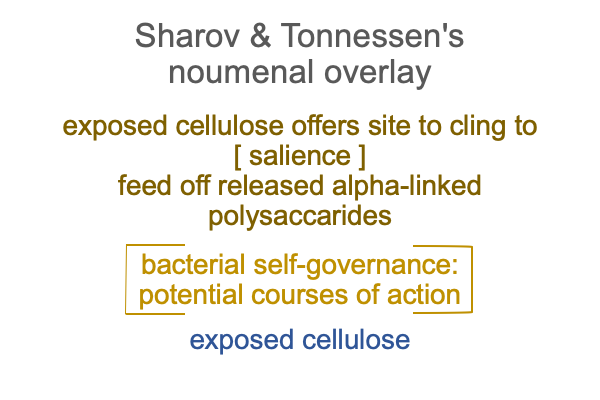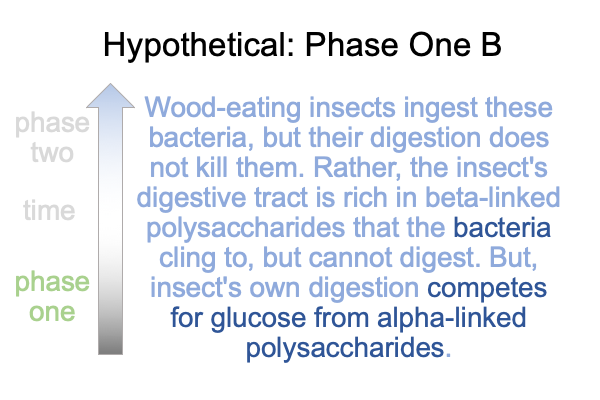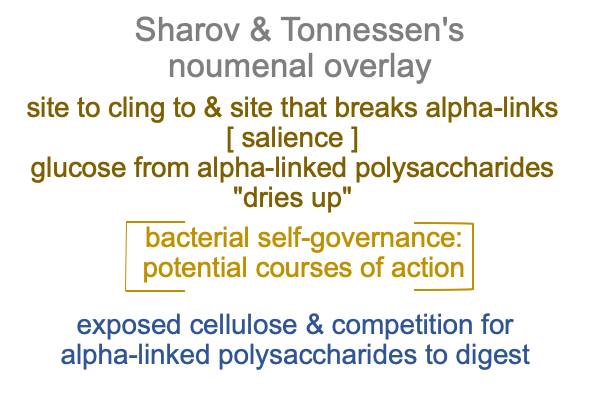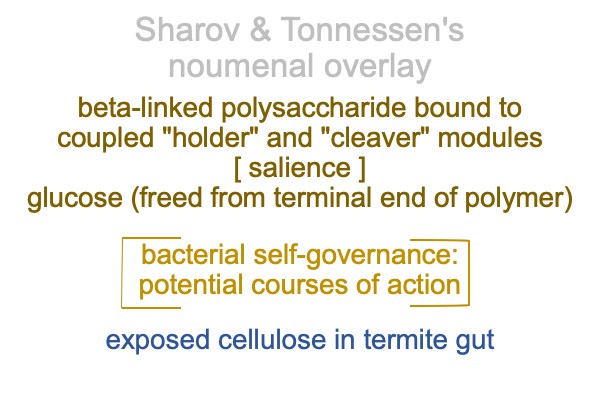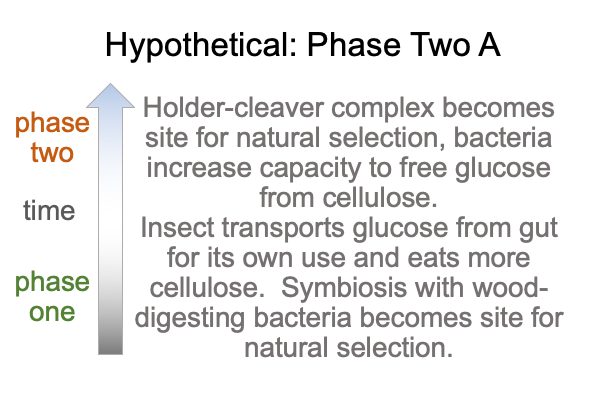Biosemiotics and the Origins of Life on Earth (Part 4 of 8)
0293 As it turns out, the interscope for emergence also contains the exemplar sign-relation. Well, every three-level interscope contains an exemplar sign-relation. So maybe, that is no surprise. The exemplar sign-relation binds the situation and perspective levels. A situation-level actuality2b (SVe) stands for a perspective-level actuality2c (SOe) in regards to the perspective-level normal context3c operating on a perspective-level potential1c (SIe).
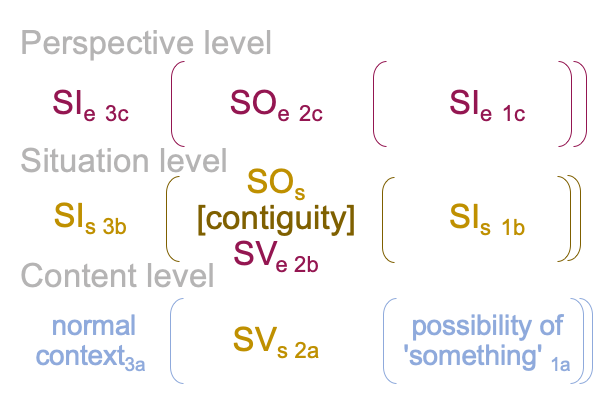
“SV”, “SO” and “SI” label the sign-vehicle, sign-object and sign-interpretant. Subscript “s” denotes the specifying sign-relation. Subscript “e” denotes the exemplar sign-relation.
0294 When I turn my gaze back to the S&T noumenal overlay, I note the following.
The three-level interscope depicting the production of ATP as an emergent being contains both specifying and exemplar sign relations.
The S&T noumenal overlay directly incorporates the specifying sign-relation.
When the full three-level interscope of emergence associates to the S&T noumenal overlay, the incorporation of the exemplar sign-relation becomes apparent.
0295 So, for emergence, the agency aspect of the S&T noumenal overlay should express the exemplar sign-relation.
Here is a picture.
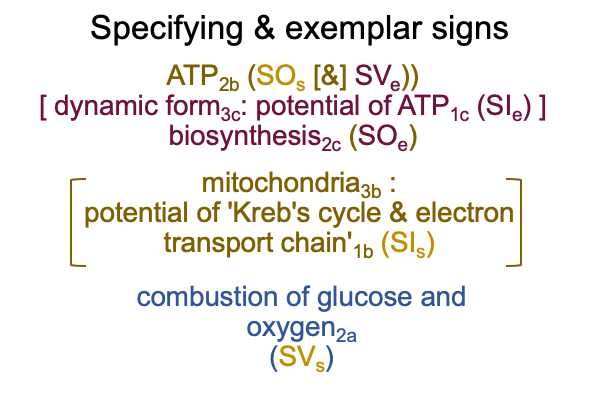
0296 I recall that the agency aspect for the S&T noumenal overlay has simpler formulations.
Here is one that is worth comparing to the ongoing association.
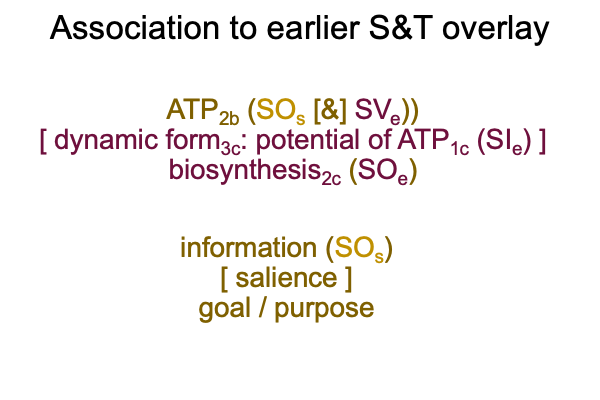
0297 In mitochondrial respiration as emergence, ATP2b is the actuality2 on the situationb level. Both actuality2 and situationb associate to Peirce’s category of secondness. ATP2b is the actuality2 on the levelb associated with actuality. Consequently, the observation and measurement of ATP2b in biological systems should be of interest for modeling the specifying character of [habit] as well as the exemplar character of [salience].
In this regard, ATP2b associates to information and information displays the way that the emergent being2b serves as both the sign-object of the specifying sign-relation (SOs) and the sign-vehicle of the exemplar sign-relation (SVe).
0298 The production of ATP2b is the specifying sign-object (SOs).
The dissipation of the energy (SOe) embodied by ATP2b (SVe) represents a goal.
ATP2b (SVe) stands for the productive dissipation of its energy2c (SOe) in the normal context of dynamic form3coperating on the potential intracellular uses of ATP1c (SIe).
This application of emergence, appearing in Comments on Mariusz Tabaczek’s Arc of Inquiry (2019-2024), offers a promising start to look at Sharov’s carefully formulated model for the origin of life.

